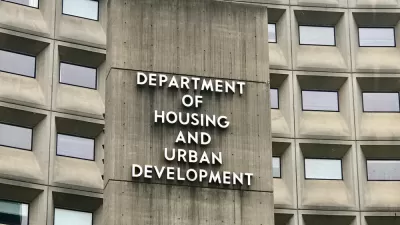An interview with a leading academic on the subject of fair housing offers perspective on the new Affirmatively Furthering Fair Housing rule created by the Department of Housing and Urban Development.
Elias Isquith interviews Paul Jargowsky—professor of public policy at Rutgers University and the author of Poverty and Place: Ghettos, Barrios, and the American City—about the historical significance of the new fair housing rules produced by the Department of Housing and Urban Development (HUD).
Jargowsky calls on his experience working with the Clinton Administration and HUD to generate methods for affirmatively furthering fair housing. His conclusion: the new rules are long overdue in the effort to end segregation.
An example of the exchanges and arguments of the interview:
Is the administration endorsing any view or theory of segregation in particular with this plan? Or is it more of a grab-bag of ideas?
I don’t see that as endorsing or coming from a particular point of view about the sources of racial segregation, but I think it’s quite clear that at least partly it’s driven by the pattern of existing housing. If you look at how housing has been constructed, and I’m talking both private market and subsidized housing, over the last decade, that provides a framework within which people have to find their units. If we’re talking about a group of African Americans, who on average have much lower income than whites, if the housing they can afford is all within either the central cities or the older inner ring suburbs, that’s going to be a constraint on the ability to reduce segregation.
FULL STORY: “It’s really long overdue”: Why Obama’s new anti-segregation rules are coming decades late

Montreal Mall to Become 6,000 Housing Units
Place Versailles will be transformed into a mixed-use complex over the next 25 years.

Planetizen Federal Action Tracker
A weekly monitor of how Trump’s orders and actions are impacting planners and planning in America.

DARTSpace Platform Streamlines Dallas TOD Application Process
The Dallas transit agency hopes a shorter permitting timeline will boost transit-oriented development around rail stations.

Interactive Map Reveals America's “Shade Deserts”
Launched by UCLA and American Forests to combat heat-related deaths, the tool maps the shade infrastructure for over 360 U.S. cities.

Bicycles and Books — In Sacramento, Libraries Now Offer Both
Adult library card holders can check out e-bikes and e-trikes for up to one week.

Colorado Landfills Emit as Much Pollution as 1M Cars
Landfills are the third-largest source of methane pollution in Colorado, after agriculture and fossil fuel extraction.
Urban Design for Planners 1: Software Tools
This six-course series explores essential urban design concepts using open source software and equips planners with the tools they need to participate fully in the urban design process.
Planning for Universal Design
Learn the tools for implementing Universal Design in planning regulations.
City of Mt Shasta
City of Camden Redevelopment Agency
City of Astoria
Transportation Research & Education Center (TREC) at Portland State University
US High Speed Rail Association
City of Camden Redevelopment Agency
Municipality of Princeton (NJ)





























